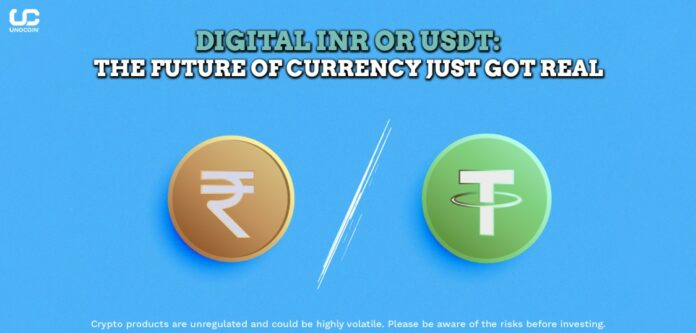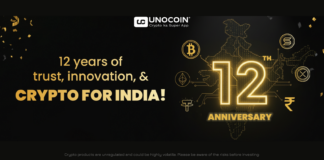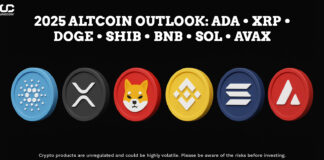The world of money is changing—fast. As physical cash becomes less relevant, digital currencies are taking centre stage. In India, this evolution brings two competing visions to the forefront: Digital INR, the Reserve Bank of India’s central bank digital currency (CBDC), and USDT (Tether), a privately issued, dollar-backed stablecoin that dominates global crypto markets. So, which digital currency truly represents the future?
What is Digital INR?
Digital INR, or the e-rupee, is India’s official CBDC. It’s issued and controlled by the Reserve Bank of India (RBI), and aims to offer a sovereign digital alternative to cash—secured, regulated, and designed for instant settlement.
Key features:
- Backed 1:1 by the RBI
- Accessible via selected banks and digital wallets
- Ideal for domestic payments, retail, and business use
- Real-time settlement and traceability
Digital INR aims to modernise India’s monetary infrastructure while giving the government full visibility into money flows—a double-edged sword for those valuing privacy.
What is USDT?
USDT (Tether) is a stablecoin pegged to the U.S. dollar and widely used in global crypto trading and DeFi platforms. Unlike the Digital INR, USDT isn’t issued by a central bank, but by a private company. Yet, it remains the most traded crypto asset in terms of daily volume—often used to move money across borders, hedge against volatility, and engage with decentralized apps.
Key benefits:
- Global liquidity and 24/7 transferability
- Popular on all major crypto exchanges
- Easy bridge between fiat and crypto markets
- Crucial for DeFi, NFTs, and blockchain apps
USDT’s dominance in crypto markets has made it the go-to digital dollar in regions with unstable currencies—or slow banking systems.
Digital INR vs. USDT: A Head-to-Head
| Feature | Digital INR | USDT (Tether) |
| Issuer | Reserve Bank of India | Private company (Tether Ltd.) |
| Backing | Indian Rupee (sovereign) | U.S. dollar (reserves-based) |
| Use Case | Domestic payments, B2B | Global transfers, crypto trading |
| Traceability | Fully traceable | Pseudonymous |
| Regulation | Fully regulated | Lightly regulated, scrutiny rising |
| Blockchain Usage | Limited (currently closed) | Active in open ecosystems |
Why It Matters to Indian Users
For the everyday Indian user, the Digital INR could soon become part of everyday transactions—from retail payments to tax refunds. But for those looking to participate in global crypto markets, hedge against currency devaluation, or engage in DeFi and NFTs, USDT remains indispensable.
Unocoin enables seamless access to both: you can store, send, and receive USDT while staying updated on India’s Digital INR rollout. Whether you’re exploring CBDCs or trading on global platforms, the future is digital—and multi-currency.
Conclusion
The rise of Digital INR and USDT signals a future where currency isn’t just paper or plastic—it’s programmable, borderless, and always-on. One is centralized and sovereign; the other decentralized and global. Rather than one replacing the other, both will likely coexist—serving different needs in India’s fast-evolving digital economy. As money goes digital, choice and awareness become key. At Unocoin, we’re here to help you navigate this new era—securely and seamlessly.
Please find the list of authentic Unocoin accounts for all your queries below:Twitter: https://twitter.com/Unocoin
Telegram Group: https://t.me/Unocoin_Group
Telegram Channel: https://t.me/+fasQhTKBsfA5N2Zl
E-mail id: [email protected]
Other links: linktr.ee/unocoin
Contact details: 7788978910 (09:30 AM IST – 06:30 PM, Mon-Sat)
App store link: https://apps.apple.com/us/app/unocoin/id1030422972?ls=1
Playstore link: https://play.google.com/store/apps/details?id=com.unocoin.unocoinwallet
Disclaimer: Crypto products are unregulated as of this date in India. They could be highly volatile. At Unocoin, we understand that there is a need to protect consumer interests, as this form of trading and investment has risks that consumers may not be aware of. To ensure that consumers who deal in crypto products are not misled, they are advised to DYOR (Do Your Own Research).







